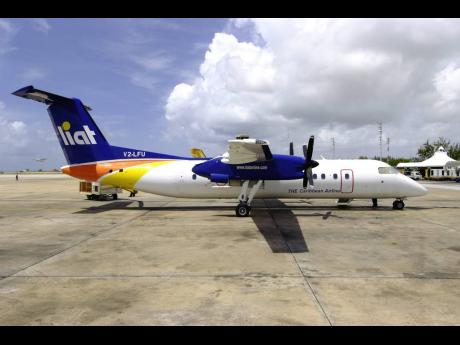Elizabeth Morgan | Transportation crisis in the CARICOM region
Reading a book on travel in the Caribbean in 1903, it was evident that travel among the islands was not a pleasure. One needed Job’s patience and stamina. This is still very much the case in 2023. There is only limited maritime transportation in...
Reading a book on travel in the Caribbean in 1903, it was evident that travel among the islands was not a pleasure. One needed Job’s patience and stamina. This is still very much the case in 2023.
There is only limited maritime transportation in the region and the air transport system is quite challenging. The president of the Caribbean Development Bank (CDB), Dr Hyginius ‘Gene’ Leon, points to the need for “dependable and cost-effective air transportation services as essential for the transformation of several of the region’s economies”. Implementing free movement of goods and services through the CARICOM Single Market and Economy (CSME) not only requires reliable and trustworthy financial and digital services, but also transportation.
The inadequacies in regional transportation, indeed, have been on the CARICOM agenda for years.
MARITIME TRANSPORTATION
At the time of Federation, 1958-1962, the Canadian government donated to the region two ships, the Federal Palm and the Federal Maple, for regional maritime transport. The West Indies Shipping Corporation (WISCO), which was established in 1963, had failed by 1992 and was eventually wound up by the CARICOM Heads of Government. It was recognised that this service helped to improve intra-regional trade. However, it did not make a profit and was not subsidised by governments.
Today, there is no regional maritime transport system. There is limited ferry service operated within various countries such as the French L’Express des Îles which operates from Guadeloupe and Martinique to Dominica and St Lucia; the service between the islands of St Vincent and the Grenadines; that between Trinidad and Tobago, and the M.V. Canawaima from Guyana to Suriname.
There have been studies and pilot projects but no indication of whether a regional ferry service will materialise any time soon.
Prior to 1958, the British Overseas Airways Corporation (BOAC) operated a subsidiary airline in the British West Indies, which was the British West Indian Airways (BWIA). The West Indian Federal Government planned to purchase this subsidiary as the regional airline. According to a story I heard in Barbados on their Caribbean Broadcasting Corporation (CBC) television some years ago and read, Dr Eric Williams of Trinidad and Tobago pre-empted the regional negotiations and bought BWIA, which is now Caribbean Airlines. So, BWIA became Trinidad and Tobago’s national airline.
Leeward Islands Air Transport (LIAT) was established in 1956 on the island of Montserrat. In 1974, eleven Caribbean governments acquired LIAT which had its base primarily at V.C. Bird Airport in Antigua and Barbuda. The airline had its ups and downs but facilitated transportation within the eastern and southern Caribbean. However, in June 2020, after much deliberations among the owner countries, it was announced by the Prime Minister of Antigua and Barbuda Gaston Browne that LIAT would be liquidated.
In 1968, Air Jamaica was established but ceased operation in 2015. Air Jamaica in the 1990s into the 2000s had flights into the Caribbean – St Lucia, Curacao, Cuba, Belize and The Bahamas.
Airlines have come and gone in the Caribbean. They are costly to operate and have to be subsidised. Others which have gone include Caribbean Star and Caribbean Sun Airlines owned by now incarcerated Sir Allen Sandford; RedJet which operated out of Barbados (2011-2012); Fly Jamaica (2011-2019), and, most recently, Antigua Airways which was flying from Nigeria to Antigua and on to Toronto. Antigua Airways’ operations are suspended.
The idea remained to have a regional Caribbean airline. In the 1990s onward, the idea was to merge Air Jamaica with other Caribbean airlines, and around 2006 to make Caribbean Airlines into the regional airline incorporating LIAT and Air Jamaica. Jamaica now has an interest in Caribbean Airlines. None of these regional ideas materialised.
Airlines currently operating and owned in the region are Caribbean Airlines, BahamasAir, Cayman Airlines, and Suriname Airways. There are also smaller airlines.
TRAVEL CRISIS
With the demise of LIAT, it seems travel in the Caribbean is in crisis, especially for Caribbean nationals and anyone travelling into the region. Already pre-2020, it could take two days to travel from Jamaica via Antigua or Barbados to get to Dominica. Now with reduced flights and higher costs, more often than not, one has to travel through Miami, Florida. Imagine travelling from Georgetown, Guyana to Port of Spain, Trinidad, then up to Miami, Florida to get back down to Grenada! For Jamaicans, it might just be easier, if you have a US visa, to plan your trip through Miami to get to the eastern Caribbean islands and even to Barbados, Trinidad and Tobago, Guyana and Suriname. Can you now imagine the difficulty to attend in-person meetings, move between university campuses, conduct business, and participate in sporting and cultural events? Not everything can be done online and difficulties are there too.
Fifty years on, this transportation crisis is a major challenge to regional integration. It must be high on the agenda of the 44th CARICOM Heads of Government Meeting, Nassau, The Bahamas, February 15-17, 2023.
Elizabeth Morgan is a specialist in international trade policy and international politics. Send feedback to columns@gleanerjm.com

